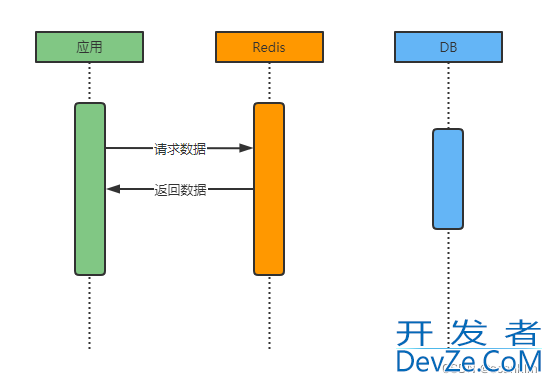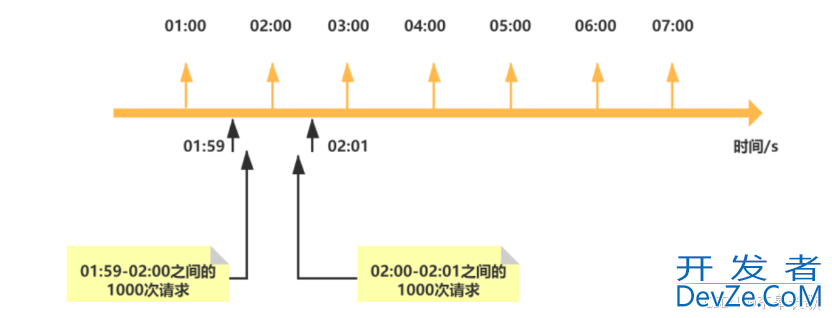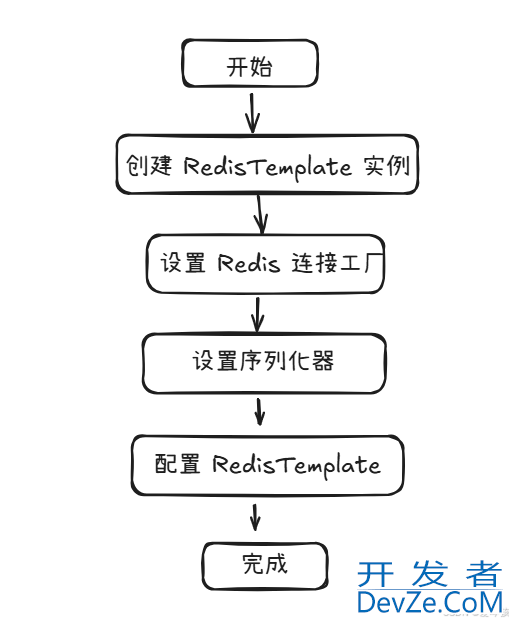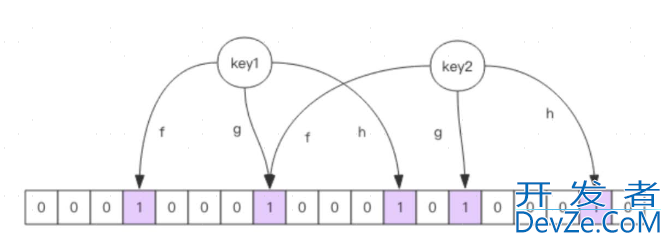目录
- 前言
- 一、为什么使用Lua
- 二、执行流程
- 三、代码详解
- lua\lock.lua
- lua\refresh.lua
- lua\rlock.lua
- lua\unlock.lua
- 写优先还是读优先?
- 写锁是如何阻塞写锁的?
- 读锁与读锁之间互斥吗?
- 写锁会有被饿死的情况吗?
- 抽象lock类
- Options
- Redismutex
- 测试用例
前言
读写锁的好处就是能帮助客户读到的数据一定是最新的,写锁是排他锁,而读锁是一个共享锁,如果写锁一直存在,那么读取数据就要一直等待,直到写入数据完成才能看到,保证了数据的一致性

一、为什么使用Lua
Lua脚本是高并发、高性能的必备脚本语言, 大部分的开源框架(如:redission)中的分布式锁组件,都是用纯lua脚本实现的。
那么,为什么要使用Lua语言来实现分布式锁呢?我们从一个案例看起:
所以,只有确保判断锁和删除锁是一步操作时,才能避免上面的问题,才能确保原子性。
其实很简单,首先获取锁对应的value值,检查是否与requestId相等,如果相等则删除锁(解锁)。虽然看似做了两件事,但是却只有一个完整的原子操作。
第一行代码,我们写了一个简单的 Lua 脚本代码; 第二行代码,我们将Lua代码传到 edis.eval()方法里,并使参数 KEYS[1] 赋值为 lockKey,ARGV[1] 赋值为 requestId,eval() 方法是将Lua代码交给 Redis 服务端执行。
二、执行流程
加锁和删除锁的操作,使用纯 Lua 进行封装,保障其执行时候的原子性。
基于纯Lua脚本实现分布式锁的执行流程,大致如下:

三、代码详解
lua\lock.lua
-- KEYS = [LOCK_KEY, LOCK_INTENT]
-- ARGV = [LOCK_ID, TTL]
local t = redis.call('TYPE', KEYS[1])["ok"]
if t == "string" then
return redis.call('PTTL', KEYS[1])
end
if redis.call("EXISTS", KEYS[2]) == 1 then
return redis.call('PTTL', KEYS[2])
end
redis.call('SADD', KEYS[1], ARGV[1])
redis.call('PEXPIRE', KEYS[1], ARGV[2])
return nil
-- KEYS = [LOCK_KEY, LOCK_INTENT]和-- ARGV = [LOCK_ID, TTL, ENABLE_LOCK_INTENT]if not redis.call("SET", KEYS[1], ARGV[1], "PX", ARGV[2], "NX") then行首使用了redis.call函数调用,将 LOCK_KEY 和 LOCK_ID 存储到 Redis 中,并设置过期时间为 TTL。如果设置失败,则进入条件内部。- 在条件内部,判断 ENABLE_LOCK_INTENT 的值。如果为 1,则执行
redis.call("SET", KEYS[2], 1, "PX", ARGV[2]),将 LOCK_INTENT 键设置为 1,并设置与 LOCK_KEY 相同的过期时间。这是为了表示锁被占用的意图。 - 返回
redis.call("PTTL", KEYS[1]),即 LOCK_KEY 的剩余过期时间,以毫秒为单位。这是为了告知调用方锁已被占用,返回锁的剩余过期时间。 - 若上述条件都不满足,则执行
redis.call("DEL", KEYS[2]),删除 LOCK_INTENT 键。 - 返回
nil,表示锁已成功获取。
它首先尝试通过 SET 命令将 LOCK_KEY 存储到 Redis 中,如果设置失败,则表示锁已被其他进程占用,返回锁的剩余过期时间。如果设置成功,则删除 LOCK_INTENT 键,表示锁已成功获取
lua\refresh.lua
-- KEYS = [LOCK_KEY]
-- ARGV = [LOCK_ID, TTL]
local t = redis.call('TYPE', KEYS[1])["ok"]
if (t == "string" and redis.call('GET', KEYS[1]) ~= ARGV[1]) or
(t == "set" and redis.call('SISMEMBER', KEYS[1], ARGV[1]) == 0) or
(t == "none") then
return 0
end
return redis.call('PEXPIRE', KEYS[1], ARGV[2])
- 延长锁的时间
lua\rlock.lua
-- KEYS = [LOCK_KEY, LOCK_INTENT]
-- ARGV = [LOCK_ID, TTL]
local t = redis.call('TYPE', KEYS[1])["ok"]
if t == "string" then
return redis.call('PTTL', KEYS[1])
end
if redis.call("EXISTS", KEYS[2]) == 1 then
return redis.call('PTTL', KEYS[2])
end
redis.call('SADD', KEYS[1], ARGV[1])
redis.call('PEXPIRE', KEYS[1], ARGV[2])
return nil
local t = redis.call('TYPE', KEYS[1])["ok"]通过TYPE命令获取键的类型,并将结果存储在变量t中。使用条件逻辑判断锁的状态:
- 如果
t是字符串,则返回PTTL命令的结果,即锁的剩余过期时间。 - 如果
LOCK_INTENT键存在,则返回PTTL命令的结果,即锁占用意图的剩余过期时间。
- 如果
由于以上条件都不满足,即锁未被占用,将锁 ID (
ARGV[1]) 添加到LOCK_KEY集合中。使用
PEXPIRE命令设置LOCK_KEY的过期时间为ARGV[2](以毫秒为单位)。返回
nil,表示锁已成功获取。
lua\unlock.lua
-- KEYS = [LOCK_KEY]
-- ARGV = [LOCK_ID]
local t = redis.call('TYPE', KEYS[1])["ok"]
if t == "string" and redis.call('GET', KEYS[1]) == ARGV[1] then
return redis.call('DEL', KEYS[1])
elseif t == "set" and redis.call('SISMEMBER', KEYS[1], ARGV[1]) == 1 then
redis.call('SREM', KEYS[1], ARGV[1])
if redis.call('SCARD', KEYS[1]) == 0 then
return redis.call('DEL', KEYS[1])
end
end
return 1
- 检查指定键的类型,如果是字符串并且键的值等于给定的
ARGV值,则删除该键。 - 如果指定键的类型是集合,并且集合中包含给定的
ARGV值,则将该值从集合中移除。随后,如果集合中不再包含任何元素,则删除该键。
写优先还是读优先?
写锁会阻塞读锁,所以是写优先
写锁是如何阻塞写锁的?
如果当前的写锁已经被占用,其他写锁的获取请求会被阻塞,因为在释放锁的逻辑中,会先判断锁的类型,如果是写锁,则会判断当前锁的值是否符合预期,从而判断能否删除该锁。
读锁与读锁之间互斥吗?
对于读锁而言,多个读锁之间是可以并发持有的,因此读锁之间默认是不会互斥的,可以同时执行读操作。
写锁会有被饿死的情况吗?
写优先锁可以保证写线程不会饿死,但是如果一直有写线程获取写锁,读线程也会被「饿死」。
既然不管优先读锁还是写锁,对方可能会出现饿死问题,那么我们就不偏袒任何一方,搞个「公平读写锁」。
公平读写锁比较简单的一种方式是:用队列把获取锁的线程排队,不管是写线程还是读线程都按照先进先出的原则加锁即可,这样读线程仍然可以并发,也不会出现「饥饿」的现象。
抽象lock类
import (
"context"
"errors"
"time"
"github.com/redis/go-redis/v9"
)
var _ context.Context = (*Lock)(nil)
// Lock represents a lock with context.
type Lock struct {
redis redis.Scripter
id string
ttl time.Duration
key string
log LogFunc
ctx context.Context
cancel context.CancelFunc
}
// ID returns the id value set by the lock.
func (l *Lock) ID() string {
return l.id
}
// Key returns the key value set by the lock.
func (l *Lock) Key() string {
return l.key
}
func (l *Lock) Deadline() (deadline time.Time, ok bool) {
return l.ctx.Deadline()
}
func (l *Lock) Done() <-chan struct{} {
return l.ctx.Done()
}
func (l *Lock) Err() error {
return l.ctx.Err()
}
func (l *Lock) Value(key any) any {
return l.ctx.Value(key)
}
// Unlock unlocks.
func (l *Lock) Unlock() {
l.cancel()
_, err := scriptUnlock.Run(context.Background(), l.redis, []string{l.key}, l.id).Result()
if err != nil {
l.log("[ERROR] unlock %q %s: %v", l.key, l.id, err)
}
}
func (l *Lock) refreshTTL(left time.Time) {
defer l.cancel()
refresh := l.updateTTL()
for {
diff := time.Since(left)
select {
case <-l.ctx.Done():
return
case <-time.After(-diff): // cant refresh
return
case <-time.After(refresh):
status, err := scriptRefresh.Run(l.ctx, l.redis, []string{l.key}, l.id, l.ttl.Milliseconds()).Int()
if err != nil {
if errors.Is(err, context.Canceled) {
return
}
refresh = refreshTimeout
l.log("[ERROR] refresh key %q %s: %v", l.key, l.id, err)
continue
}
left = l.leftTTL()
refresh = l.updateTTL()
if status == 0 {
l.log("[ERROR] refresh key %q %s already expired", l.key, l.id)
return
}
}
}
}
func (l *Lock) leftTTL() time.Time {
return time.Now().Add(l.ttl)
}
func (l *Lock) updateTTL() time.Duration {
return l.ttl / 2
}
ID():返回锁的ID。Key():返回锁的键名。Deadline():返回锁的截止时间和标志,如果没有设置则返回零值。Done():返回一个通道,在锁的上下文被取消或者锁过期后会被关闭。Err():返回锁的错误状态。Value(key any) any:返回一个键关联的值,用于传递上下文相关的数据。Unlock():解锁操作,会取消锁的上下文,并调用Redis的脚本解锁操作。refreshTTL(left time.Time):刷新锁的过期时间,定期更新Redis中锁的过期时间,直到锁的上下文被取消、锁过期或无法继续刷新为止。leftTTL():返回锁的剩余过期时间。updateTTL():更新刷新锁的间隔时间。每次减少一半
为什么需要为什么l.ttl / 2
这是为了实现锁的自动续约。通过定期刷新锁的过期时间,可以确保锁在使用过程中不会过期而被意外释放。
这种做法可以在以下情况下带来一些好处:
- 减少锁的续约操作对Redis的压力:由于续约操作是相对较昂贵的,通过将过期时间缩短为原来的一半,可以降低续约的频率,从而减少对Redis的请求,减少了网络和计算资源的消耗。
- 避免长时间持有锁带来的问题:如果某个持有锁的进程/线程发生故障或延迟,导致无法及时释放锁,那么其他进程可能会长时间等待获取该锁,造成资源浪费。通过定期刷新锁的过期时间,可以在锁即将过期之前及时释放锁,降低该问题的风险。
Options
package redismutex
import (
"context"
"log"
"os"
"sync"
"time"
)
const (
lenBytesID = 16
refreshTimeout = time.Millisecond * 500
defaultKeyTTL = time.Second * 4
)
var (
globalMx sync.RWMutex
globalLog = func() LogFunc {
l := log.New(os.Stderr, "redismutex: ", log.LstdFlags)
return func(format string, v ...any) {
l.Printf(format, v...)
}
}()
)
// LogFunc type is an adapter to allow the use of ordinary functions as LogFunc.
type LogFunc func(format string, v ...any)
// NopLog logger does nothing
var NopLog = LogFunc(func(string, ...any) {})
// SetLog sets the logger.
func SetLog(l LogFunc) {
globalMx.Lock()
defer globalMx.Unlock()
if l != nil {
globalLog = l
}
}
// MutexOption is the option for the mutex.
type MutexOption func(*mutexOptions)
type mutexOptions struct {
name string
ttl time.Duration
lockIntent bool
log LogFunc
}
// WithTTL sets the TTL of the mutex.
func WithTTL(ttl time.Duration) MutexOption {
return func(o *mutexOptions) {
if ttl >= time.Second*2 {
o.ttl = ttl
}
}
}
// WithLockIntent sets the lock intent.
func WithLockIntent() MutexOption {
return func(o *mutexOptions) {
o.lockIntent = true
}
}
// LockOption is the option for the lock.
type LockOption func(*lockOptions)
type lockOptions struct {
ctx context.Context
key string
lockIntentKey string
enableLockIntent int
ttl time.Duration
log LogFunc
}
func newLockOptions(m mutexOptions, opt ...LockOption) lockOptions {
opts := lockOptions{
ctx: context.Background(),
key: m.name,
enableLockIntent: boolToInt(m.lockIntent),
ttl: m.ttl,
log: m.log,
}
for _, o php:= range opt {
o(&opts)
}
opts.lockIntentKey = lockIntentKey(opts.key)
return opts
}
// WithKey sets the key of the lock.
func WithKey(key string) LockOption {
return func(o *lockOptions) {
if key != "" {
o.key += ":" + key
}
}
}
// WithContext sets the context of the lock.
func WithContext(ctx context.Context) LockOption {
return func(o *lockOptions) {
if ctx != nil {
o.ctx = ctx
}
}
}
func boolToInt(b bool) int {
if b {
return 1
}
return 0
}
func lockIntentKey(key string) string {
return key + ":lock-intent"
}
SetLog(l LogFunc):设置日志记录器。WithTTL(ttl time.Duration):设置互斥锁的生存时间(TTL)选项。WithLockIntent():设置锁意图选项。newLockOptions(m mutexOptions, opt ...LockOption):创建锁的选项。WithKey(key string):设置锁的键选项。WithContext(ctx context.Context):设置锁的上下文选项。lockIntentKey(key string):为给定的锁键生成锁意图键。
可以通过设置选项来控制互斥锁的行为和属性,如生存时间、锁意图、上下文等。还提供了一些实用函数和类型,用于管理互斥锁和生成选项
redismutex
// Package redismutex provides a distributed rw mutex.
package redismutex
import (
"context"
"crypto/rand"
"embed"
"encoding/hex"
"errors"
"sync"
"time"
"github.com/redis/go-redis/v9"
)
var ErrLock = errors.New("redismutex: lock not obtained")
var (
//go:embed lua
lua embed.FS
scriptRLock *redis.Script
scriptLock *redis.Script
scriptRefresh *redis.Script
scriptUnlock *redis.Script
)
func init() {
scriptRLock = redis.NewScript(mustReadFile("rlock.lua"))
scriptLock = redis.NewScript(mustReadFile("lock.lua"))
scriptRefresh = redis.NewScript(mustReadFile("refresh.lua"))
scriptUnlock = redis.NewScript(mustReadFile("unlock.lua"))
}
// A RWMutex is a distributed mutual exclusion lock.
type RWMutex struct {
redis redis.Scripter
opts mutexOptions
id struct {
sync.Mutex
buf []byte
}
}
// NewMutex creates a new distributed mutex.
func NewMutex(rc redis.Scripter, name string, opt ...MutexOption) *RWMutex {
globalMx.RLock()
defer globalMx.RUnlock()
opts := mutexOptions{
name: name,
ttl: defaultKeyTTL,
log: globalLog,
}
for _, o := range opt {
o(&opts)
}
rw := &RWMutex{
redis: rc,
opts: opts,
}
rw.id.buf = make([]byte, lenBytesID)
return rw
}
// TryRLock tries to lock for reading and reports whether it succeeded.
func (m *RWMutex) TryRLock(opt ...LockOption) (*Lock, bool) {
opts := newLockOptions(m.opts, opt...)
ctx, _, err := m.rlock(opts)
if err != nil {
if !errors.Is(err, ErrLock) {
m.opts.log("[ERROR] try-read-lock key %q: %v", opts.key, err)
}
return nil, false
}
retuandroidrn ctx, true
}
// RLock locks for reading.
func (m *RWMutex) RLock(opt ...LockOption) (*Lock, bool) {
opts := newLockOptions(m.opts, opt...)
ctx, ttl, err := m.rlock(opts)
if err == nil {
return ctx, true
}
if !errors.Is(err, ErrLock) {
m.opts.log("[ERROR] read-lock key %q: %v", opts.key, err)
return nil, false
}
for {
select {
case <-opts.ctx.Done():
m.opts.log("[ERROR] read-lock key %q: %v", opts.key, opts.ctx.Err())
return nil, false
case <-time.After(ttl):
ctx, ttl, err = m.rlock(opts)
if err == nil {
return ctx, true
}
if !errors.Is(err, ErrLock) {
m.opts.log("[ERROR] read-lock key %q: %v", opts.key, err)
return nil, false
}
continue
}
}
}
// TryLock tries to lock for writing and reports whether it succeeded.
func (m *RWMutex) TryLock(opt ...LockOption) (*Lock, bool) {
opts := newLockOptions(m.opts, opt...)
opts.enableLockIntent = 0 // force disable lock intent
ctx, _, err := m.lock(opts)
if err != nil {
if !errors.Is(err, ErrLock) {
m.opts.log("[ERROR] try-lock key %q: %v", opts.key, err)
}
return nil, false
}
return ctx, true
}
// Lock locks for writing.
func (m *RWMutex) Lock(opt ...LockOption) (*Lock, bool) {
opts := newLockOptions(m.opts, opt...)
ctx, ttl, err := m.lock(opts)
if err == nil {
return ctx, true
}
if !errors.Is(err, ErrLock) {
m.opts.log("[ERROR] lock key %q: %v", opts.key, err)
return nil, false
}
for {
select {
case <-opts.ctx.Done():
m.opts.log("[ERROR] lock key %q: %v", opts.key, opts.ctx.Err())
return nil, false
case <-time.After(ttl):
ctx, ttl, err = m.lock(opts)
if err == nil {
return ctx, true
}
if !errors.Is(err, ErrLock) {
m.opts.log("[ERROR] lock key %q: %v", opts.key, err)
return nil, false
}
continue
}
}
}
func (m *RWMutex) lock(opts lockOptions) (*Lock, time.Duration, error) {
id, err := m.randomID()
if err != nil {
return nil, 0, err
}
pTTL, err := scriptLock.Run(opts.ctx, m.redis, []string{opts.key, opts.lockIntentKey}, id, opts.ttl.Milliseconds(), opts.enableLockIntent).Result()
leftTTL := time.No编程w().Add(opts.ttl)
if err == nil {
return nil, time.Duration(pTTL.(int64)) * time.Millisecond, ErrLock
}
if err != redis.Nil {
return nil, 0, err
}
ctx, cancel := context.WithCancel(opts.ctx)
lock := &Lock{
redis: m.redis,
id: id,
ttl: opts.ttl,
key: opts.key,
log: opts.log,
ctx: ctx,
cancel: cancel,
}
go lock.refreshTTL(leftTTL)
return lock, 0, nil
}
func (m *RWMutex) rlock(opts lockOptions) (*Lock, time.Duration, error) {
id, err := m.randomID()
if err != nil {
return nil, 0, err
}
pTTL, err := scriptRLock.Run(opts.ctx, m.redis, []string{opts.key, opts.lockIntentKey}, id, opts.ttl.Milliseconds()).Result()
leftTTL := time.Now().Add(opts.ttl)
if err == nil {
return nil, time.Duration(pTTL.(int64)) * time.Millisecond, ErrLock
}
if err != redis.Nil {
return nil, 0, err
}
ctx, cancel := context.WithCancel(opts.ctx)
lock := &Lock{
redis: m.redis,
id: id,
ttl: opts.ttl,
key: opts.key,
log: opts.log,
ctx: ctx,
cancel: cancel,
}
go lock.refreshTTL(leftTTL)
return lock, 0, nil
}
// randomID generates a random hex string with 16 bytes.
func (m *RWMutex) randomID() (string, error) {
m.id.Lock()
defer m.id.Unlock()
_, err := rand.Read(m.id.buf)
if err != nil {
return "", err
}
return hex.EncodeToString(m.id.buf), nil
}
func mustReadFile(filename string) string {
b, err := lua.ReadFile("lua/" + filename)
if err != nil {
panic(err)
}
return string(b)
}
- 通过
NewMutex函数创建一个新的分布式互斥锁。该函数接受 Redis 客户端、锁的名称和一系列选项作为参数,返回一个 RWMutex 结构体实例。 - 通过
RLock和Lock方法来获取读锁和写锁。如果无法立即获取锁,则会阻塞等待,直到获取成功或者上下文取消。 - 通过
TryRLock和TryLock方法来尝试获取读锁和写锁,如果无法立即获取锁则立即返回失败,不会阻塞。 - 该包实现了一个
Lock结构体,包含了锁相关的信息和操作方法,比如刷新锁的过期时间。 - 使用
redis.Script来执行 Lua 脚本,通过 Redis 客户端执行相应的 Redis 命令。 - 使用了
crypto/rand包来生成随机的锁标识符。 - 最终的
mustReadFile函数用于读取嵌入的 Lua 脚本文件。
测试用例
package redismutex
import (
"context"
"errors"
"log"
"strings"
"testing"
"time"
"github.com/redis/go-redis/v9"
)
func init() {
SetLog(func(format string, a ...any) {
if strings.HASPrefix(format, "[ERROR]") {
log.Fatalf(format, a编程客栈...)
}
})
}
func TestMutex(t *testing.T) {
t.Parallel()
const lockKey = "mutex"
rc := redis.NewClient(redisOpts())
prep(t, rc, lockKey)
mx := NewMutex(rc, lockKey)
lock, ok := mx.Lock()
if exp, got := true, ok; exp != got {
t.Fatalf("exp %v, got %v", exp, got)
}
defer lock.Unlock()
assertTTL(t, rc, lockKey, defaultKeyTTL)
// try again
_, ok = mx.TryLock()
if exp, got := false, ok; exp != got {
t.Fatalf("exp %v, got %v", exp, got)
}
_, ok = mx.TryRLock()
if exp, got := false, ok; exp != got {
t.Fatalf("exp %v, got %v", exp, got)
}
// manually unlock
lock.Unlock()
// lock again
lock, ok = mx.Lock()
if exp, got := true, ok; exp != got {
t.Fatalf("exp %v, got %v", exp, got)
}
defer lock.Unlock()
}
func TestRWMutex(t *testing.T) {
t.Parallel()
const lockKey = "rw_mutex"
rc := redis.NewClient(redisOpts())
prep(t, rc, lockKey)
mx := NewMutex(rc, lockKey)
lock, ok := mx.RLock()
if exp, got := true, ok; exp != got {
t.Fatalf("exp %v, got %v", exp, got)
}
defer lock.Unlock()
assertTTL(t, rc, lockKey, defaultKeyTTL)
// try again
_, ok = mx.TryLock()
if exp, got := false, ok; exp != got {
t.Fatalf("exp %v, got %v", exp, got)
}
// try rlock
rlock, ok := mx.TryRLock()
if exp, got := true, ok; exp != got {
t.Fatalf("exp %v, got %v", exp, got)
}
rlock.Unlock()
// manually unlock
lock.Unlock()
// lock again
lock, ok = mx.Lock()
if exp, got := true, ok; exp != got {
t.Fatalf("exp %v, got %v", exp, got)
}
defer lock.Unlock()
}
func TestRWMutex_LockIntent(t *testing.T) {
t.Parallel()
const lockKey = "lock_intent_mutex"
rc := redis.NewClient(redisOpts())
prep(t, rc, lockKey)
mx := NewMutex(rc, lockKey, WithLockIntent())
lock, ok := mx.RLock()
if exp, got := true, ok; exp != got {
t.Fatalf("exp %v, got %v", exp, got)
}
defer lock.Unlock()
// mark lock intent
_, _, err := mx.lock(newLockOptions(mx.opts))
if exp, got := ErrLock, err; !errors.Is(got, exp) {
t.Fatalf("exp %v, got %v", exp, got)
}
// try rlock
_, ok = mx.TryRLock()
if exp, got := false, ok; exp != got {
t.Fatalf("exp %v, got %v", exp, got)
}
// manually unlock
lock.Unlock()
// lock write
lock, ok = mx.Lock()
if exp, got := true, ok; exp != got {
t.Fatalf("exp %v, got %v", exp, got)
}
lock.Unlock() // remove lock intent
// lock again
lock, ok = mx.RLock()
if exp, got := true, ok; exp != got {
t.Fatalf("exp %v, got %v", exp, got)
}
defer lock.Unlock()
}
func TestRWMutex_ID(t *testing.T) {
t.Parallel()
rw := &RWMutex{}
rw.id.buf = make([]byte, lenBytesID)
id, _ := rw.randomID()
if exp, got := 32, len(id); exp != got {
t.Fatalf("exp %v, got %v", exp, got)
}
}
func prep(t *testing.T, rc *redis.Client, key string) {
t.Cleanup(func() {
for _, v := range []string{key, lockIntentKey(key)} {
if err := rc.Del(context.Background(), v).Err(); err != nil {
t.Fatal(err)
}
}
if err := rc.Close(); err != nil {
t.Fatal(err)
}
})
}
func assertTTL(t *testing.T, rc *redis.Client, key string, exp time.Duration) {
t.Helper()
got, err := rc.TTL(context.Background(), key).Result()
if exp, got := (any)(nil), err; exp != got {
t.Fatalf("exp %v, got %v", exp, got)
}
delta := got - exp
if delta < 0 {
delta = 1 - delta
}
if delta > time.SpIHVUyZBnhecond {
t.Fatalf("exp ~%v, got %v", exp, got)
}
}
func redisOpts() *redis.Options {
return &redis.Options{
Network: "tcp",
Addr: "0.0.0.0:6379",
DB: 9,
}
}
以上就是利用Redis lua实现高效读写锁的代码实例的详细内容,更多关于Redis lua读写锁的资料请关注编程客栈(www.devze.com)其它相关文章!









 加载中,请稍侯......
加载中,请稍侯......
精彩评论